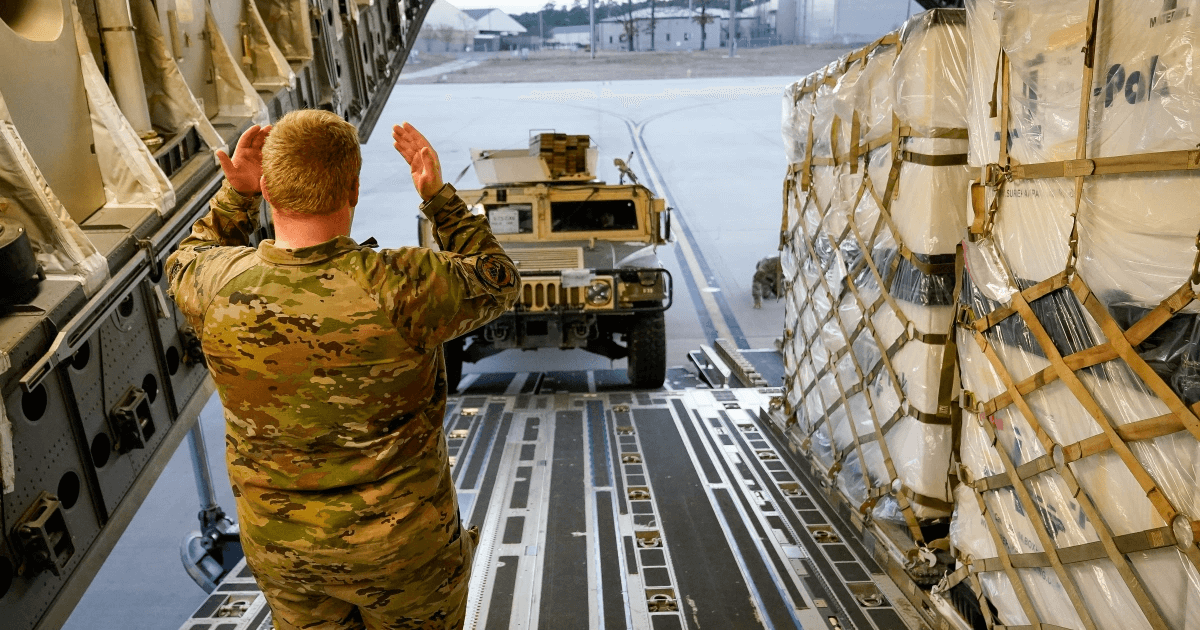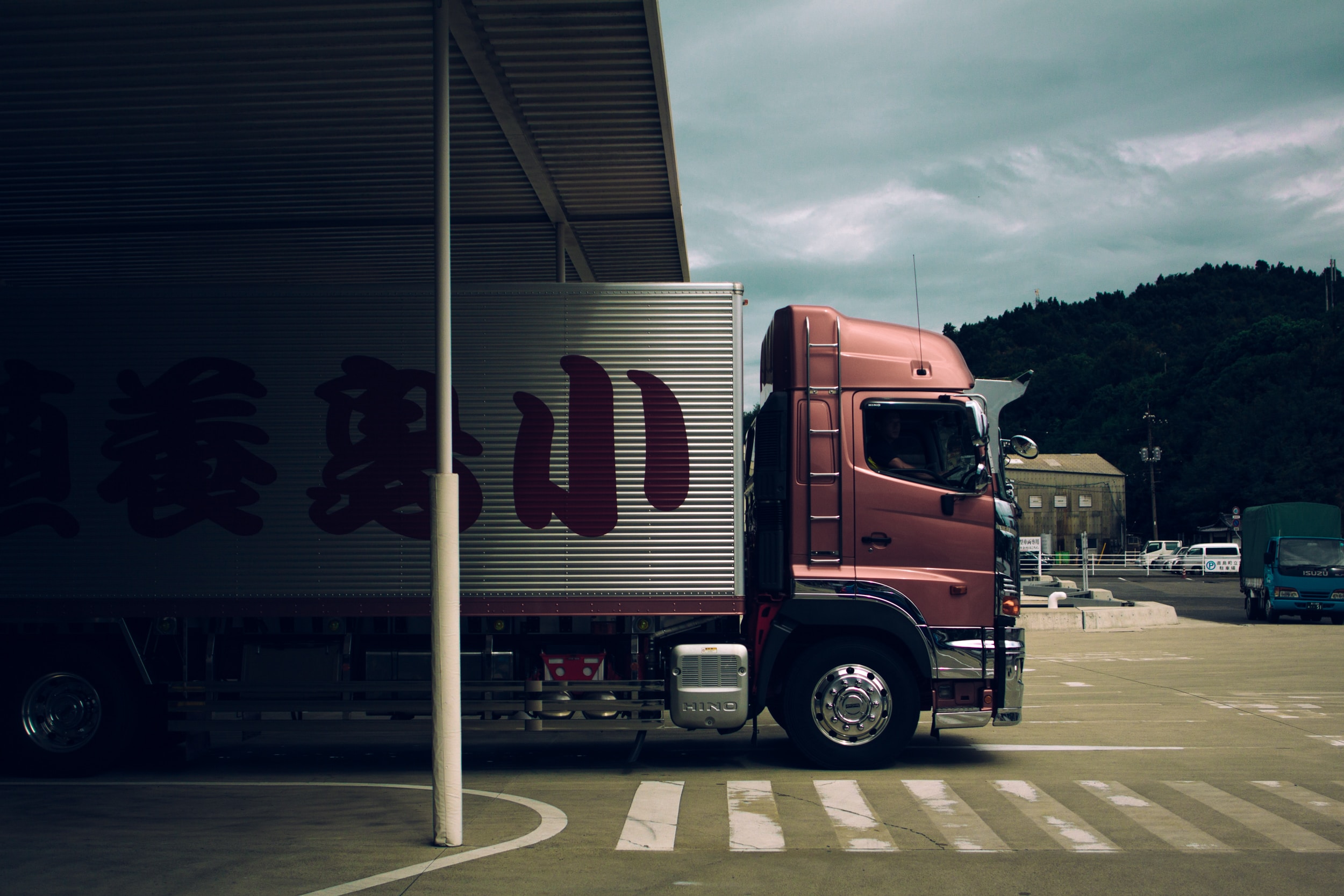In order to answer your request, we are obligated to process the data given above. Sometimes, however, we would like to use them for slightly different purposes, such as statistical data or informing you about our new products and services.We promise that we will use the given information for communication purposes only. We also remind you that you can unsubscribe from our mailing at any time (see Privacy Policy).
Why are some regions attracting many logistic companies and are turning into modern, logistic hubs, while other are rather not that popular? And why Poland is a great example of the first group? Are we ready to handle sustainable supply chains and be responsible for our environment, in the context of the growth of logistics?
Our fulfillment network manager, Kamil Odolczyk, shares his thoughts and answers to the questions around this topic.
Poland on the logistic map of Europe
Poles themselves, when asked about the location of their country, often express themselves with slight regret. The moody weather and stormy history seemingly do not give us optimism. However, the situation is changing dramatically from the point of view of logistics and the warehouse industry. Poland is located at the intersection of the most important routes for the exchange of goods, capital, and commodity flows, so an ideal location for the supply chain.
Of course, the East-West direction is of the greatest importance here, where these flows are the most viable. When we say East-West, we mean, of course, the broadly understood economic and civilization circles. Thanks to the network of Polish roads and railroads running through the convenient terrain of the Polish plains of the economy of Germany, France, and Spain, they gain convenient access to the Baltic States, Russia (at least until recently) and China, which has been consistently developing the continental efficient New Silk Road for years.
However, the North-South direction is also important, which, although somewhat forgotten in the coming years, may gain more and more importance, combining the commercial potential of the Black Sea and Baltic ports for a supply chain.
.png?width=930&name=Blog%20post%20Poland%20-%20logistic%20hub%20(1).png)
Thanks to the unification within the European Community market, Poland ceased to be merely a transit country, ensuring the safe passage of transport within its borders, so a great option for the supply chain. For several years, we have become one of the most important hubs of global trade.
Where exactly are the opportunities for the supply chain?
This trend was significantly accelerated by the boom in the e-commerce market resulting from the COVID-19 pandemic, which in turn had a significant impact on the available warehouse space. According to the 7R and Colliers report published in May 2022, 2021 was a record year in terms of supply and demand for modern warehouses. At the end of the first quarter of 2022, "the total supply of modern warehouse space in Poland (...) exceeded 25 million m2. Last year, developers completed investments with a total area of approx. 3.1 million m2, which is the highest annual result in the history of the Polish industrial and logistics market”.
Poles are also an increasingly aware nation when it comes to environmental issues, exerting an increasing influence on large corporations to include sustainable logistics and environmental protection measures in their plans. Therefore, green logistics is more and more popular in Poland.
How did the war in Ukraine transform the logistics system in Poland?
The war unleashed by Russia affects the functioning of modern businesses, transport, and logistics on a scale that cannot be found in modern history. The network of connections surrounding the globe free from the fall of the Iron Curtain had to be sharply disrupted because of the strong sanctions imposed by the Western World on Russia and the military impediments to trade with and through Ukraine.
The turmoil due to natural causes did not spare Poland, although in the current situation we also have new opportunities, especially in the potential of the logistics sector and supply chain. The growing costs of building materials, energy, and fuels will undoubtedly be among the biggest challenges for Polish logistics. This will undoubtedly result in higher construction costs and, consequently, also in the rental and operation of warehouse space. Combined with a significant outflow of workers from the construction sector, it may also herald significant delays and longer delivery times for newly emerging logistics centers.

The same problem applies to the TSL sector. The research by the Polish Economic Institute conducted in March this year shows that more than half of the companies in the supply chain are concerned about business continuity. We can also expect changes in the availability and costs of courier services, especially in the event of a protracted conflict and the possible problems with the availability of fossil fuels.
The war on the eastern border of Poland also creates new opportunities, which are already becoming an important factor supporting the growth of the logistics sector. First, Poland, due to its location and vital interests in with East, has become the main logistic base for humanitarian aid intended for the areas affected by the war. Aid transports from the United States and Europe are transshipped and stored mainly in the eastern regions of Poland, which has significantly increased the demand for logistics services in previously less desirable regions.
The influx of over 3 million people is also not without impact. This increase in the number of inhabitants will have a natural impact on the greater demand for consumer goods, stimulating trade and the e-commerce sector (already dynamically developing during the pandemic). This will naturally create a need for specialized fulfillment.
What's the key to eCommerce warehousing?
At first glance, it may seem that eCommerce warehousing is no different from traditional contract logistics. After all, the activities that are performed for eCommerce customers are typical for a traditional fulfillment warehouse: goods acceptance, storage, complete order, and shipment of orders. However, the more closely we look at the specifics of the eCommerce industry, the more we see the challenges that magazines must face.
The specificity of the eCommerce industry results directly from the expectations and habits of individual consumers. Ecommerce entrepreneurs look at logistics from the point of view of the end customer and his satisfaction with purchases because this is what often determines the willingness (or lack thereof) of the recipient to return to a specific seller. Hence the tendency to treat eCommerce logistics as the entirety of processes from purchasing to receiving the parcel.
The traditional approach to storage in a narrow scope (from accepting an order only to releasing a shipment from inventory and the warehouse) no longer fully satisfies the needs of sellers who want to fulfill the promise of sale as quickly as possible, but also as satisfactory as possible. Rapid reporting, system connections between fulfillment centers and storefronts as well as monitoring and transferring the statuses of not only orders but also the shipments themselves are necessary for almost every seller offering their products online.
%20(1).png?width=930&name=Blog%20post%20Poland%20-%20logistic%20hub%20(2)%20(1).png)
This layer should be additionally covered with a large variety of orders, which within one seller may contain from a few to a dozen articles, contain additional materials such as leaflets, inserts, or be packed in personalized packages on request. Operators of warehouses intended for eCommerce also must meet the need for high flexibility of services, responding to seasonal increases in sales or handling reverse logistics.
Besides the above-mentioned elements, it is essential to address the niche of bulky products, the storage and further fulfillment of which is increasingly necessary.
Green logistics and sustainable supply chains
Let's be honest: sustainability and green logistics really matter these days. Awareness and efforts to reduce the environmental impact of human activity on the sustainability aspects are also a topic that has not bypassed supply chains. Sustainable logistics, also known as green logistics, is a direction that will be increasingly emphasized in the industry. From the warehouses themselves, which are currently designed with the lowest possible carbon emissions in mind, to the wider use of hybrid vehicles in wheeled transport sustainable logistics are very important. More and more stringent standards imposed by law, as well as rising energy and fuel costs, significantly accelerate the pace of efforts to reduce the emissivity of logistics facilities. We can't move forward without green logistics in our businesses.
A huge sector that is using the resources of the Polish logistics hub and seems to be one of the most concerned about sustainable logistics is fashion. Sustainability is visible in many aspects, much more than in other businesses. Investing in environmental protection is a must-be process. Inventory management is one of those logistical processes that might seem least likely to undergo a green shift in green logistics. Nevertheless, it can offer at least one option for a sustainable supply chain - differentiation of warehousing and fulfillment points. (Green Logistics Project).
.png?width=2206&name=eco-numbers%20(1).png)
This is a benefit to all growing fashion retailers, not only because it reduces CO2 emissions but also because it helps with processing incoming customer orders more efficiently. Thanks to the distribution of stocks in strategic points of sales regions, the number of transport methods involved in the whole process is fewer than in the case of shipment from one central fulfillment facility. By shortening the distance between the warehouse and the delivery address, retailers can simply reduce their carbon footprints while gaining an advantage in the form of simplified scaling as well.
Shipping companies are facing up to the scientific facts and are looking ever more boldly towards a sustainable future. Packaging materials are such a large component of all shipments that it makes them an integral part of sustainable logistics development.
.jpg?width=1200&name=paper-bags%20(1).jpg)
What are the threats to the warehouse industry?
The eCommerce industry from the point of view of ecology is not, contrary to appearances, an unequivocal phenomenon. On the one hand, we have research showing that the eCommerce model is more environmentally friendly. Consumers who buy products online do not use their cars or public transport to drive to their favorite store. On the other hand, many small shipments carried out in the door-to-door system and the inherent relatively large number of returns contribute to the increased traffic of delivery vehicles and buses and also lead to greater consumption of packaging materials and environmental problems. The industry addresses these phenomena by introducing more and more biodegradable and recycled packaging, often using this argument as an additional benefit for customers.
Modern warehouse systems and automation of packaging processes, in turn, help to reduce the number of returns resulting from order picking errors. Promoting deliveries to collection points and parcel machines significantly reduces the number of journeys by courier vehicles and carbon emissions. Is it enough to tick the box "sustainable logistics"? All those are for sure a big concern for local people living in Poland and aware of sustainability and climate change - what is the scale of regional environmental impact and how does it affect them? We can't deny that there are many negative impacts, however, local and global governments are responsible for issuing, auditing, and controlling the compliance of the standards. Green logistics is a very important scope in many strategies, laws, and other rules of the modern world.
Sustainable logistics
When we talk about sustainable logistics, we mean action at different levels of the businesses which ultimately leads to greater responsibility for the planet. The combination of these efforts, named "green logistics", will make your online businesses healthier in the long-term and your brand image closer to the people who share these values and also trying to be eco-friendly.
The logistics industry is not lagging with changes aimed at reducing its impact on the natural environment and climate change. It is expected that the previously discussed methods aimed at minimizing the carbon footprint and increasing the use of renewable energy sources will be even more desirable not only to carriers, investors, or owners of logistics centers but also to the individual customer. Green logistics is a future.
What trends have a chance to develop in the context of Poland as a logistics hub?
Let's then have a look at what trends are the hottest, and which are the directions of the development of Poland as a logistic hub. Is there a place for sustainable logistics? Is it complicated to organize the whole supply chain? What features are the most desired?
New investors and companies from the east
Such a violent geopolitical force as war is not conducive to, and often even makes it impossible to operate in a place engulfed by it. Many companies running or planning to start logistics and operations in Eastern European markets may decide to move their branches and logistics network to a more stable Poland. The safety of the supply chain is one of the most important things for any logistics company.
Progressive automation and digitization of warehouses and transport
Modern supply chain systems and logistics, supported by artificial intelligence and Big Data analysis, are more and more often hosted in warehouses. In conjunction with automatic fulfillment lines, the systems not only ensure the highest standards of transport and shipment preparation but also allow for immediate completion and shipment of complex orders. As a result, more and more often parcels will reach recipients already available or on the same day after placing the order. This is one of the top subjects of good service and logistics according to customers' surveys.
Fulfillment as a service & fulfillment networks
The development of the e-commerce industry, increase in consumption, and the popularization of the direct-to-customer (D2C) model among small and medium-sized sellers with the simultaneous possibility of scaling the business beyond the borders of the home country mean that traditional warehouse logistics, although functional, do not offer optimal answers. The situation is changing with efficient and innovative logistics platforms like Linker Cloud, offering their eCommerce customers the Fulfillment-as-a-Service (FaaS) service. Thanks to it, sellers can focus on their key marketing and sales activities, delivering the best experience to their customers, without worrying about the logistics aspect. Thanks to networks of logistics partners and smart supply chains, sellers get easy access to the global markets with local distribution. Further facilitation of scaling is the concentration of many marketplaces and all available logistics partners in one supply chain system, providing comprehensive logistics services in all supported markets without the need for many integrations and individual contract negotiations.
Summing Up...
Poland has become a great logistics hub and there is a lot of data confirming this trend. We observe a willingness to invest in logistics centers being built all the time, big players are building their warehouses and logistics centers, new transport companies are emerging, and these decisions are dictated by specific arguments. Logistically, Poland is developing in a very good direction, which has a positive effect on the situation of the country and its inhabitants. There will be eCommerce or d2c business owners, it is worth keeping this in mind and considering Polish companies are valuable resources and potential opportunities for future development in logistics areas, having in mind environmental topics and the green logistics guidelines.

.jpg)






